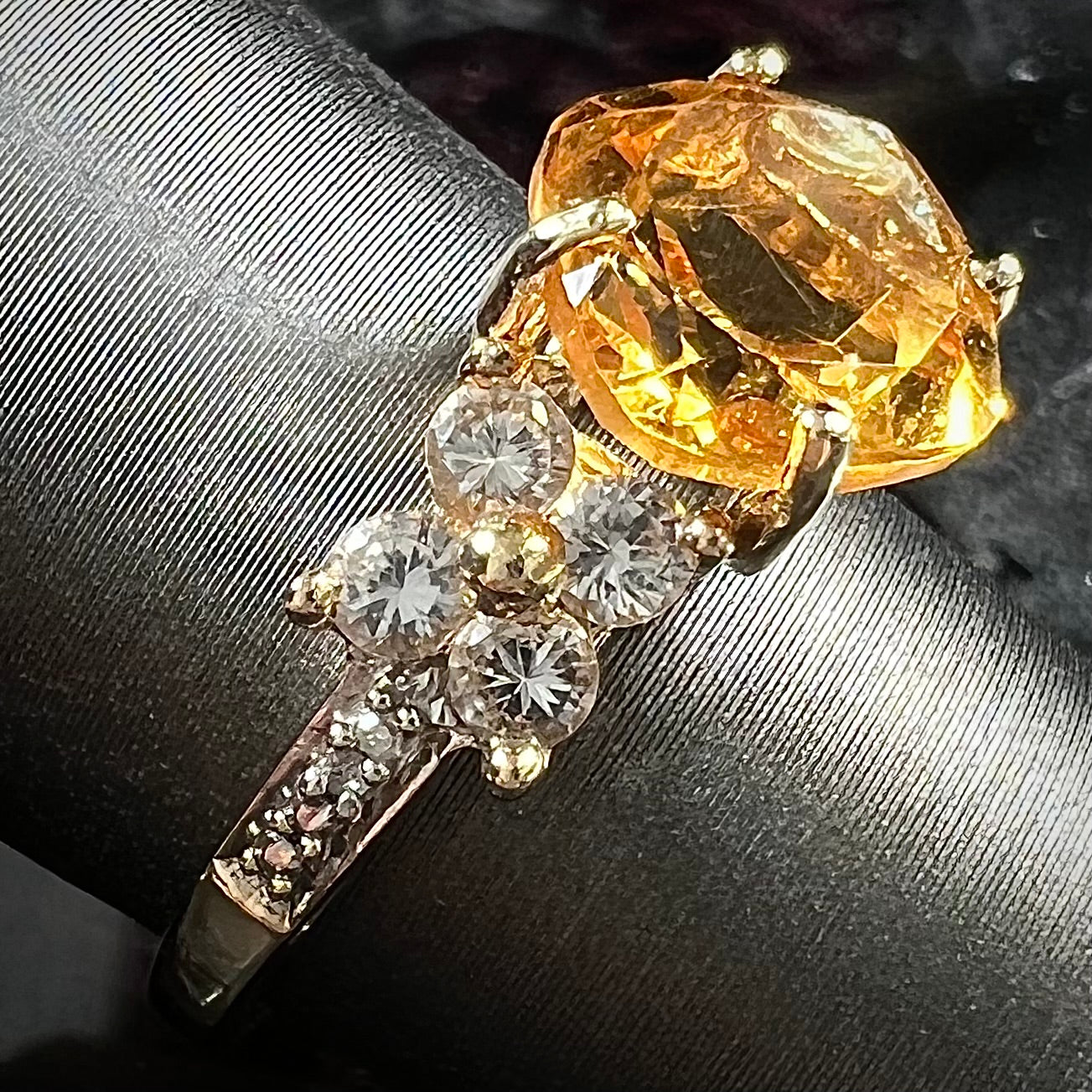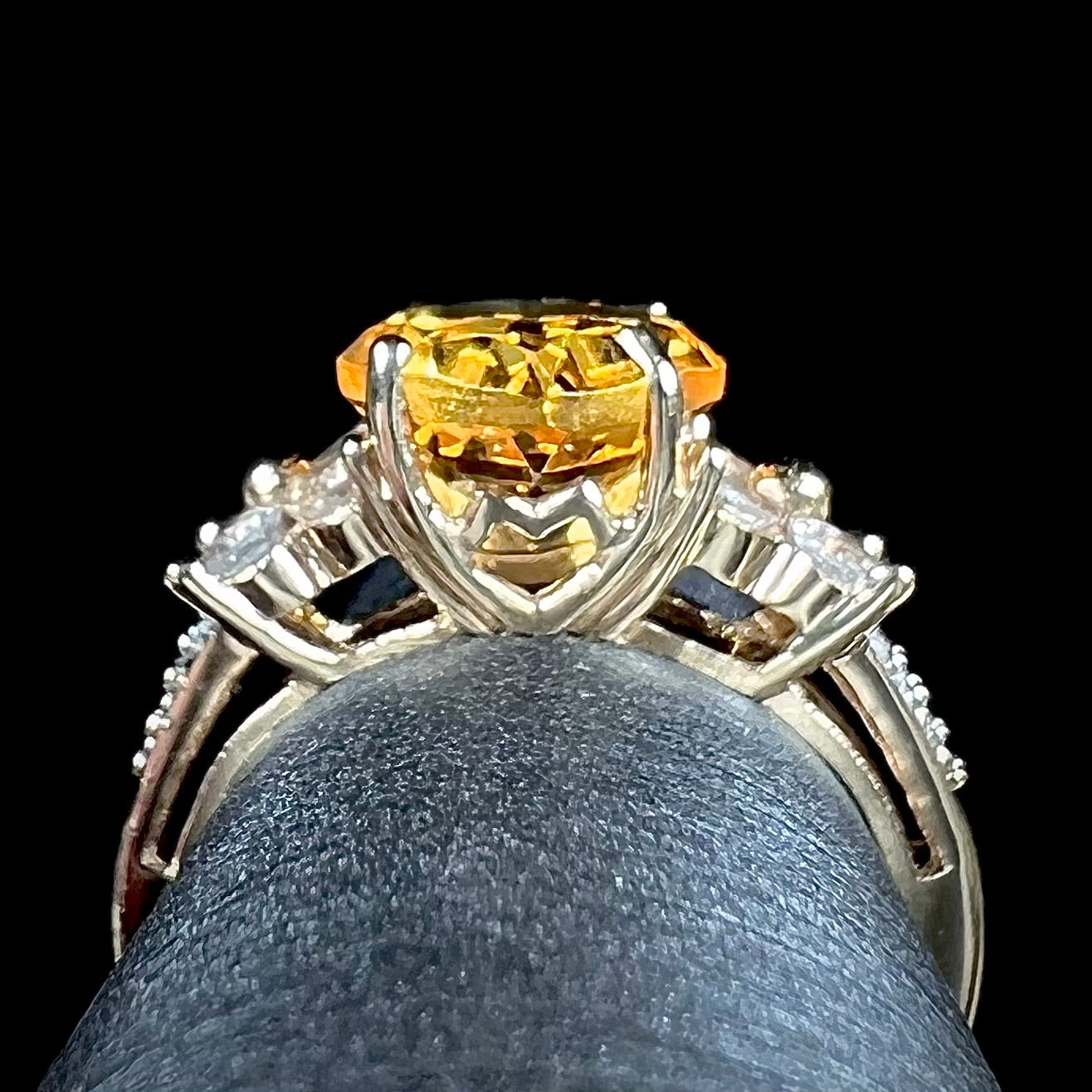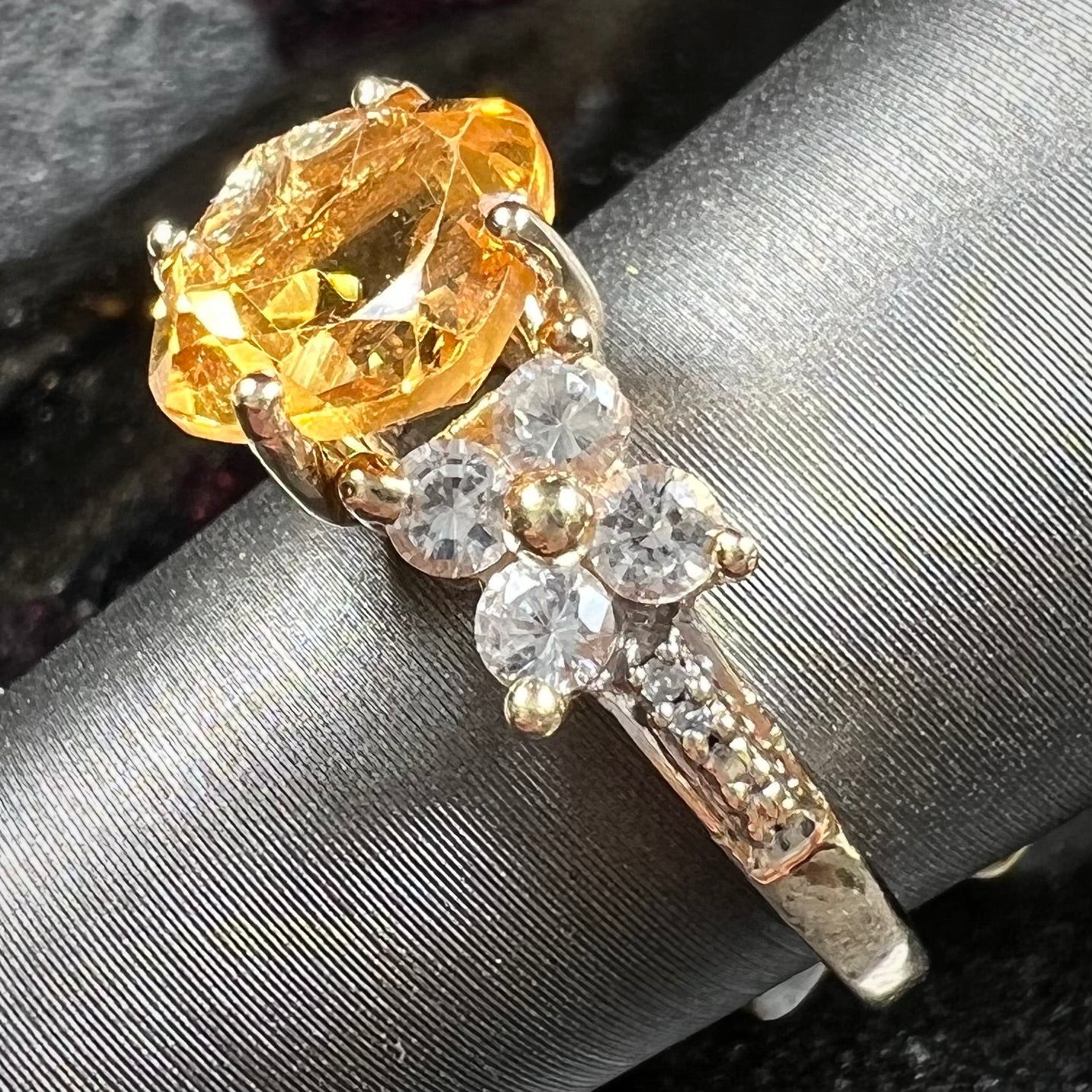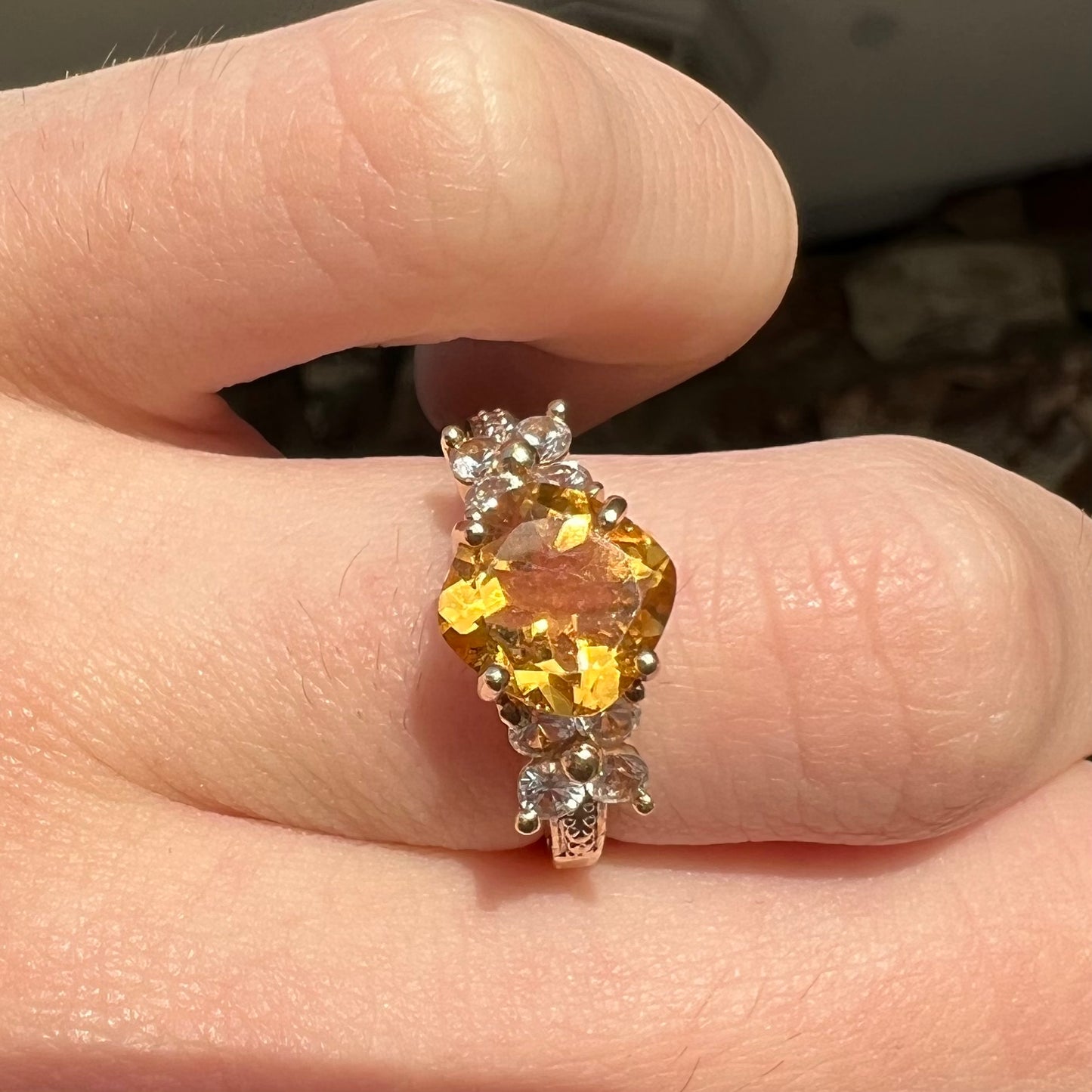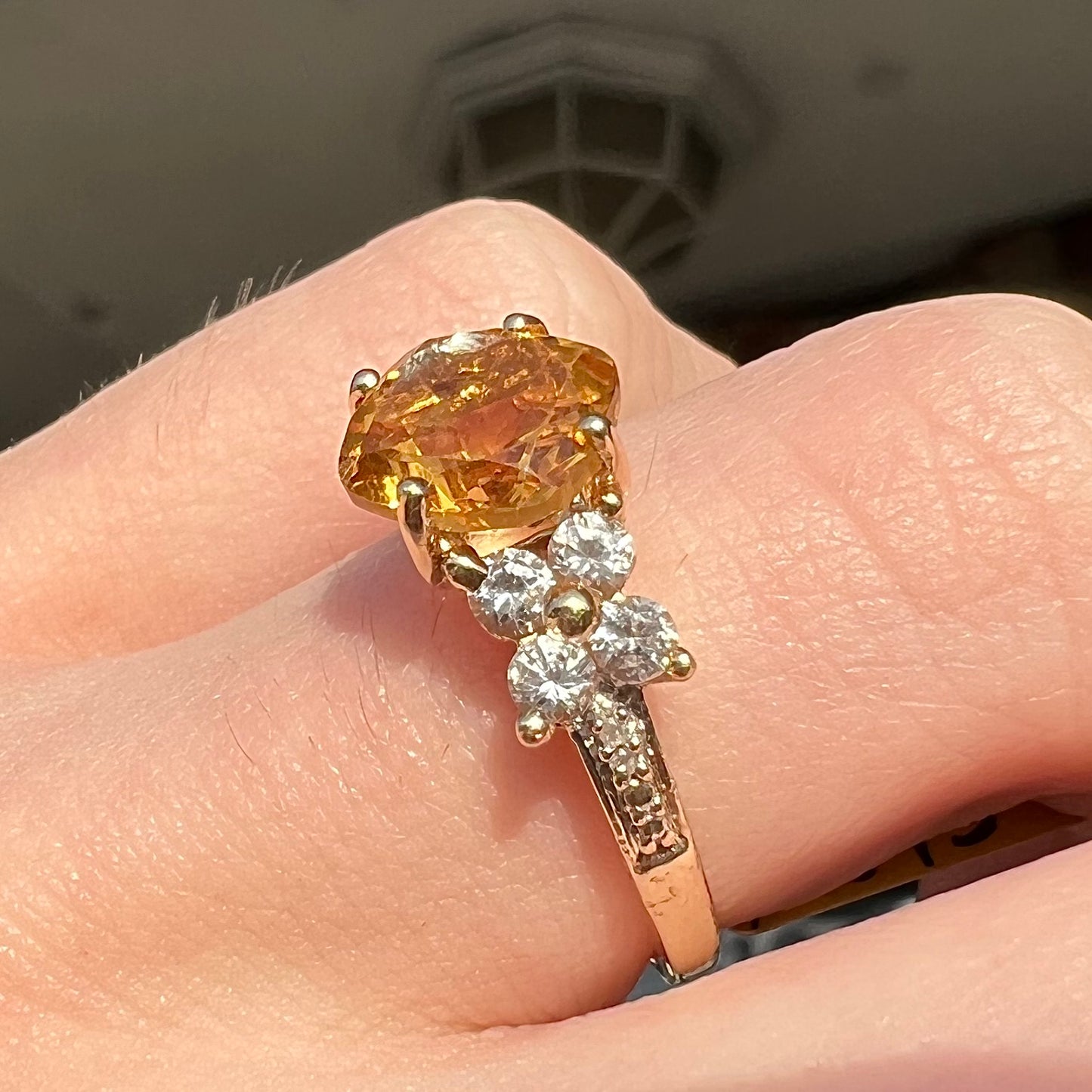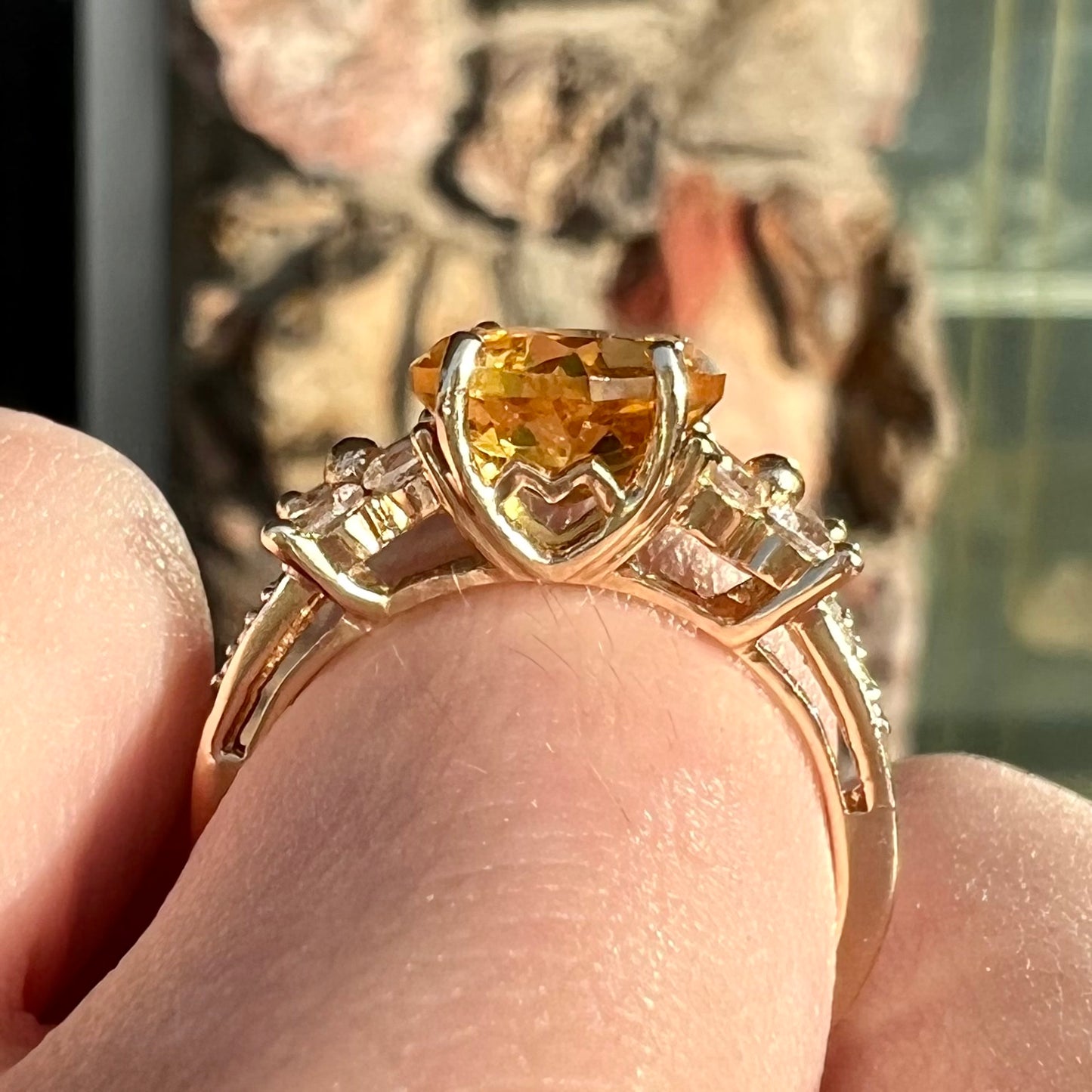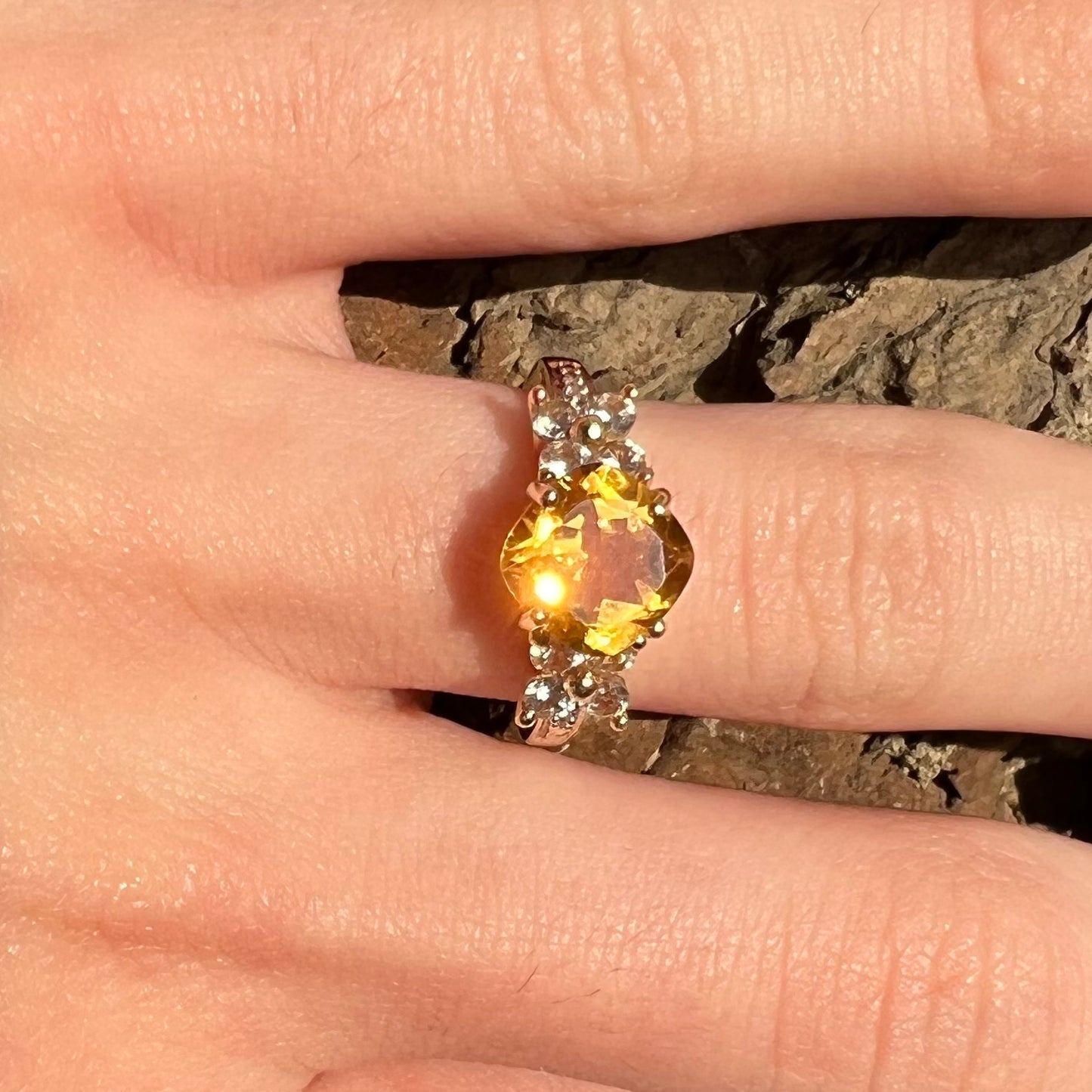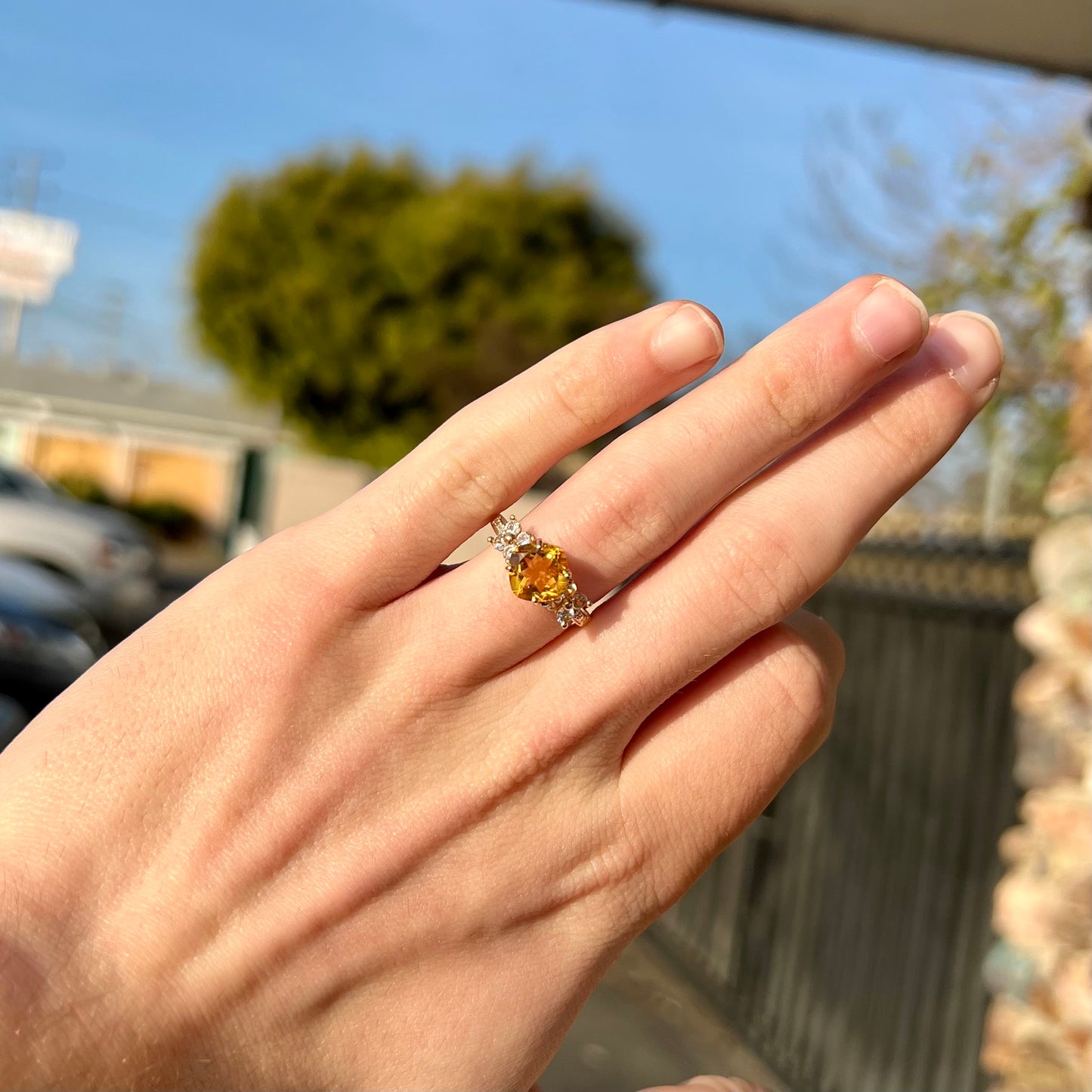Burton's Gems and Opals
Citrine & White Sapphire Ring | 10kt | Estate
Citrine & White Sapphire Ring | 10kt | Estate
Couldn't load pickup availability
A Bit About The Piece:
Cushion cut citrine ring set with white sapphire flowers.
Details, details...
The Center Stone: Citrine
- measurements: 8.97mm x 9mm x 4.8mm
- faceted cushion cut
The Side Stones: White Sapphires and Diamonds
- 8 Standard Round Brilliant Cut sapphires
- average sapphire millimeter size: 2.6mm
- 4 single cut diamonds
- approximate total diamond weight: 0.04ct
The Setting: Cast Prong and Pave Set Ring
- 10kt yellow gold, solid
- default size: 5.75
About Citrine:
Citrine is a yellow variety of quartz. Often used as an alternate birthstone to topaz for the month of November, shades can vary from a pale yellow to vivid red-orange (referred to as "Madeira citrine"). Some stones can contain varying amounts of purple amethyst, even going as far as creating a vivid natural split of yellow and purple; this is called "ametrine." Natural citrine can be found in Russia and Madagascar, though purple amethyst from Brazil is commonly heat treated to create citrine. This is a widely accepted practice in the gem trade, and it is indistinguishable from non-treated material without an independent lab report.
Because citrine is quartz, material is durable and ranks 7 on the Mohs hardness scale. Citrine makes great rings and is easy to clean with soap and water at home. Chemical jewelry cleaners are safe to use on citrine jewelry.
About Sapphire:
While many know sapphire to be blue, the gemstone forms naturally in any shade and saturation of color on the color spectrum. Like ruby, sapphire is a member of the "corundum" family. This means that all rubies are a particular shade of red sapphire. Another notable variety of corundum is "padparadscha sapphire," a sunset, salmon pink sapphire from Sri Lanka, Madagascar, and Tanzania. Other popular colors in the trade include yellow, pink, and white sapphire. Color changing varieties do exist, as well as stones that display "asterism," a term for when reflected light creates a star effect in the stone. Most sapphire available on the market is heat treated. This is an accepted practice in the industry, and it is best to assume ALL sapphire has been heat treated unless otherwise proven by a trusted independent laboratory report. Sapphire is the official birthstone for the month of September.
Sapphire is an incredibly durable stone that is excellent for everyday wear. The stone ranks 9 on the Mohs hardness scale and is highly scratch resistant as a result; it also is resistant to chipping or breaking due to being tough as well. Sapphire jewelry, natural or manmade, is safe to clean in chemical jewelry cleaners, ultrasonic cleaners, and steam cleaners.
Wanna closer look?
Share
